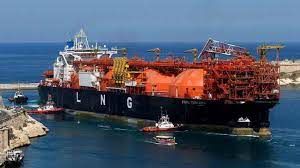F.P. Report
ISLAMABAD: Petroleum group imports have contracted by 21.84 per cent during the July-May period of 2022-23 – a sign that the coalition government is able to reduce trade deficit but at the same time raises questions about the country’s overall economic health.
Similarly, the overall imports during this period registered a 29.15pc dip and stood at $51.210 billion (provisional) as against $72.280 billion last fiscal year.
The latest data released by the Pakistan Bureau of Statistics (PBS) show that the petroleum group imports during the period under consideration stood at $15.382 billion against $19.679 billion recorded last fiscal year.
When it comes to a comparison between May and April this year, these imports saw a significant jump to $1.407bn after a 57.91pc increase against $891.468 billion recorded previous month.
Also on year-on-year basis, the figures for May 2023 show a 46.80pc decline as the petroleum imports in same month last year were $2.645 billion.
The latest year-on-year figures are even starker given that rupee has depreciated considerably, showing that the consumption and the volume is down dramatically.
It is one of the reason why Shell Plc – the parent company of Shell Pakistan – have decided to leave Pakistan just like Germany and other countries as it failed to compete with other competitors around the globe – thus deciding to now focus on exploration and supply instead of retail business.
When it comes to the import of [finished] petroleum products within the larger group, the decline was even larger 32.67pc during the July-May period –$6.748 billion against $ 10.022 billion during the same period of the last fiscal year.
But the figures stood at $599.080 million in May 2023 compared to $ 312.588 million in April 2023, translating into a 91.65pc growth.
Meanwhile, the overall imports in May this year were $4.328bn (provisional) as compared to $2.997bn in April. It shows a 44.41pc increase but represents a decline of 35.98pc as compared to $6.760bn in May 2022.
The comparative numbers for two other groups during the first 11 months of 2022-23 and 2021-22 are: machinery down 47.75pc to $5.399bn from $10.333bn and food dipping by 0.84pc to $8.380bn from $8.451bn.







